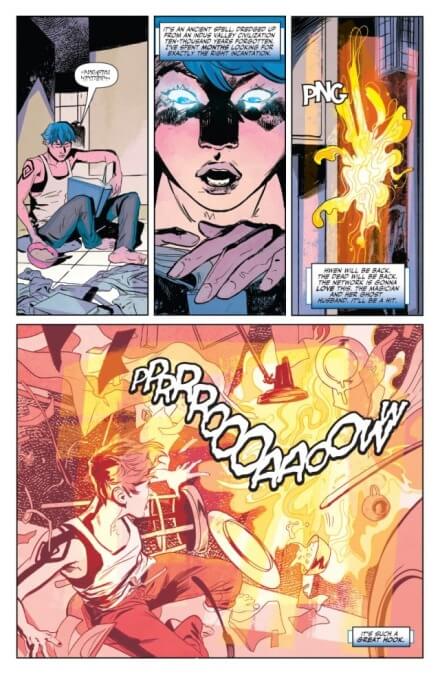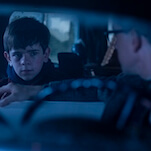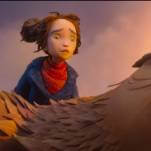Valiant’s superhero roster isn’t as familiar as DC’s or Marvel’s, and while a lot of what Valiant has to offer includes incredible world building and a rich history, it sometimes comes at the cost—like many other superhero stories—of more personal, intimate narratives that help to root the characters. Doctor Mirage is the rare exception to that rule, a comic that’s deeply committed to both a loving, vital relationship and the power an individual character has to save the world, or at least her part of it. Shan Fong Mirage is one half of a halfway famous duo, the star of a supernatural reality show called Paranormal Investigation along with her husband Li Hwen Mirage. The original hook was that Hwen could do magic and Shan could see the dead: The only problem now is that Hwen himself is on the other side of the veil—and worse, Shan can’t even see his ghost.
Writer Magdalene Visaggio does a good job of giving the reader enough information to get caught up without making the pacing drag or distracting those who have followed Shan’s previous adventures. It’s not necessary to have read The Death Defying Doctor Mirage, the five-year-old run from Jen Van Meter and Roberto De La Torre that leaves off roughly where the new book picks up, but it is a good run and Kevin Wada’s covers for it are spectacular.
Visaggio quickly establishes not only Shan’s history and the context for her new adventure, but also just how exhausted and overwhelmed she is. Shan is a woman who’s been coming up against impossible odds for ages, and seems like she’s running on fumes now, truly alone for the first time as the ghosts who have been omnipresent for most of her life have all disappeared. Artist Nick Robles does a great job of pushing Shan’s raw emotions to the surface: her body language and facial expressions are dogged but failing, suspicious and verging on desperate. When a new person comes into her life, knowing things that only she and Hwen know and claiming her dead husband has a new message, Shan can’t help but grasp onto this flimsy hope, even as she wants to dismiss it all.
Robles does some incredible work with his backgrounds in this issue, too. Shan’s home is in shambles, but her dreams and sometimes even her waking moments are plagued by visions of the place where the dead dwell. Robles and colorist Jordie Bellaire do a great job of making deadside look vast and impenetrable. Bellaire’s considerable skill is on display in a series of double-page spreads that lead to the climax of the issue. Shan’s visitor, Grace Lugo, taps into wild and unknown power, and the page bursts from a limited dawn-time palate into bright, vibrant neons and especially intense yellow. It’s Shan’s own tornado and sudden drop into the Land of Oz, and much like Dorothy, her journey is only beginning.
Doctor Mirage has the strong foundation of a solid character history, but also the flexibility of a less recognized name and a set number of issues. The book also benefits from slotting into the same genre as several beloved and critically acclaimed stories. There are elements of Shan’s story that feel very much like Sandman and Lucifer, stories of the space where the dead exist and the living attempt to breech. There’s also similarities to Euthanauts, which Robles worked on, and Jeff Lemire’s 2011 Animal Man run, the story of someone with incredible abilities who wants to save their family from something even more powerful. But Doctor Mirage can also be beautifully wedded to The Good Place, rooted in questions of where people go when they die and what their loved ones can do in the face of an eternal afterlife—with a potential twist that will rock Doctor Mirage’s sense of reality forever. Shan’s is a sadder, darker story on its face, but there’s an unrelenting willpower to her that the Soul Squad shares, a refusal to quit in the face of impossibly unknown odds.









































